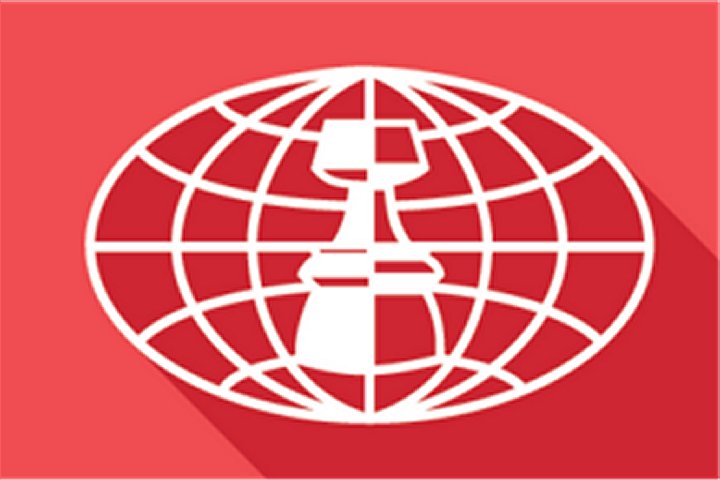


Once upon a time, there were no computer engines to analyze a chess game. And there was no database to provide millions of games at a touch of a button.
However, games were available, albeit not in a number of millions; but the most current ones, the most important and the most beautiful ones were made available to look and delight at. Not at a touch of a button, but by patiently turning page by page of a printed book of usually not less than 300 pages, containing not less than 200 games. The pleasure had to be eagerly awaited for a couple of months at a time.

The Chess Informant, the bible of serious chess players
And, against all odds, in spite of the digital, revolutionary takeover by computers of all chess matters, it is still in existence, still alive and kicking, fighting the mighty technologies of our times with a modest printing ink in dusty print houses. Yes, the number of copies has dwindled and the clientele got scarcer, however, our hero does not give up – the Chess Informant stubbornly and successfully continues the legacy of its predecessors that had set up the first publication of annotated chess games in the distant 1966!
That is over a half a century ago! Young generations, spoilt with choice by the powerful ChessBase Mega Database, might not have even heard of the existence of the Informator (the original name in Serbian is "Informator" = Informant), but the Chess Informant has contributed significantly to the development of chess and chess theory.
The first Informant was published in Yugoslavia, but after the disintegration of this multinational state, it continued as a Serbian publication that has its headquarters in Belgrade.

The logo of the Chess Informant
In the mid 60s, when the Socialist Federative Republic of Yugoslavia (SFRY) was a strong country where chess was respected and thriving, five chess enthusiasts, from various calls of life, but all ardent chess players, international masters and grandmasters, got the ingenious idea of providing the chess community with collections of annotated games that would be preserved for posterity.
IM Braslav Rabar (1919-1973), IM Milivoje Molerovic (1926-1983), GM Borislav Milic (1925 – 1986), GM Aleksandar Bozic (1922 – 2000) and GM Aleksandar Matanovic (b. 1930) had all attained prominence in the years after the Second World War as successful competitors at important international chess events and had all represented Yugoslavia at Chess Olympiads at one time or another.

(L-R) Janos Flesch, Borislav Milic, Braslav Rabar and Aleksandar Bozic
[Editor’s note: A previous version of the article captioned the above photo as having Aleksandr Matanovic on the far left.]
They were unhappy that beautiful, significant games and novelties were lost in oblivion as the only record of them were fragile score sheets. Resolved to fill in this gap, they embarked on an ambitious adventure: they would create a chess publication with the aim of bringing to light the best, most interesting games that would be annotated, most often, by the players themselves. The publication would follow three main principles:
Matanovic, the main force behind the idea and its realization, describes the beginning of the Informant:
With no support from our chess organization or any financial backup (in spite of the fact that Belgrade was a true chess centre at the time), and led only by our firm belief that we were doing the right thing, our enthusiasm gave birth to the first volume of Chess Informant in 1966. Chess players from all over the world would finally have access to information they needed. The "Chess Bible" kept spreading the word to the disciples – the "Chess Informant generation…" (Excerpt from the blurb of the 100th volume of the Informant)
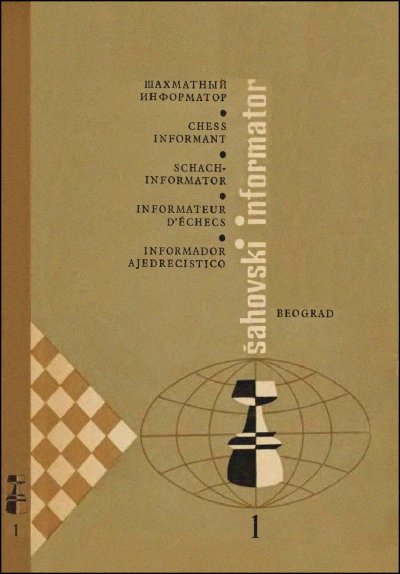
The front cover of the Informator, No 1
It started with two issues per year until the 50th volume, in 1990. Then it increased to three issues per year, until 2011. Since 2012, it is published four times per year, in March, June, September and December.
Until the appearance of the Chess Informant, players could only rely on some annotated games found in the Russian press. The Russian school was reigning supreme and the Russian publications were the main source of information on tournaments and games. But in general games were only sporadically published in chess columns, in broadsheets, or in thin specialized chess magazines. Many players and trainers made their own game collections by cutting out selected games from magazines or other sources or by copying them by hand.
The Chess Informant, although vaguely following the Russian model, would go further by presenting several hundreds of games, carefully chosen from the most significant chess events and collected in a long lasting copy of a book. The Chess Informant immediately enchanted all players that would embrace it as their unavoidable tool for their studies and preparation. The greatest names in chess were ready to annotate games or to send in their own games for publication.
When the Chess Informat first appeared, Tigran Petrosian was World Champion (1963 – 1969), and he was one of the many who thought that modern chess began with the Informant.
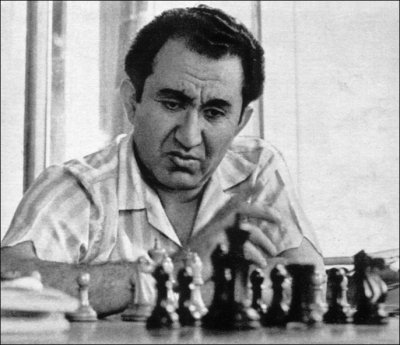
The ninth World Chess Champion, Tigran Petrosian
Over the years, all World Champions who came after Alexander Alekhine have annotated games for the Informant, starting from Euwe, who at the time was 65 years old and well out of competitive chess. He annotated only one game for the Informant but contributed to the Encyclopedia of Chess Openings, a side product of the Informant. And Euwe's book From Steinitz to Fischer was published by Chess Informant in 1976.
Mikhail Botvinnik was also approaching the end of his playing career and he annotated only few of his own games for the Informant. But he annotated 29 games by his students, the future world champions, Karpov and Kasparov. Vasily Smyslov annotated 128, Mikhail Tal 367, Tigran Petrosian 509 and Boris Spassky 17 of their own games.
Viktor Kortschnoi is the player with the most games published in the Chess Informant (1709), followed by Jan Timman with 1703.
Fischer is known to have been scourging the Russian periodicals to keep up with whatever games and potential novelties he could put his hands on. When the Informant appeared he would not only avidly study games from its pages, but also succumbed to its charms and annotated 10 of his own games for the Informant!
He is seen on a photo consulting the Informant on the day he was crowned World Champion. The photo was taken by the famous photographer Harry Benson, who for a certain time was appointed as Fischer's official photographer.
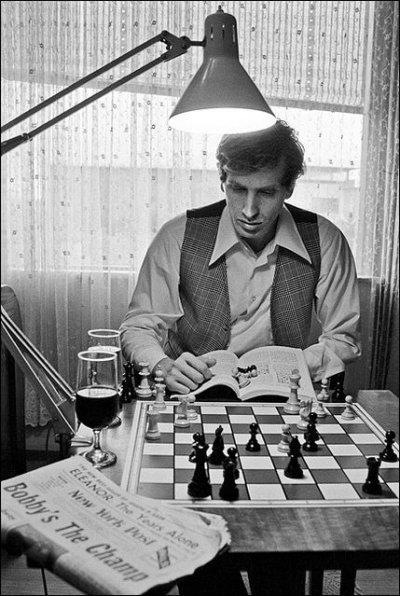
Fischer with the Informant (Photo: Harry Benson, Reykjavik, 1972)
It is well known which game Fischer was analyzing: Florin Gheorghiu vs Ulf Andersson, Las Palmas (1972), game 705 from the 13th edition of the Informant. The game was played in the fourth round of the 1. International Chess Tournament "Ciudad Las Palmas de Gran Canaria" (The City Las Palmas of the Canary Islands) in Spain, and it was awarded the "best game prize".
Perhaps was Fischer attracted to this game because the Romanian player, Florin Gheorghiu (b.1944), was his unsung nemesis as their score was equal and Gheorghiu had even won a well publicized game against Fischer.
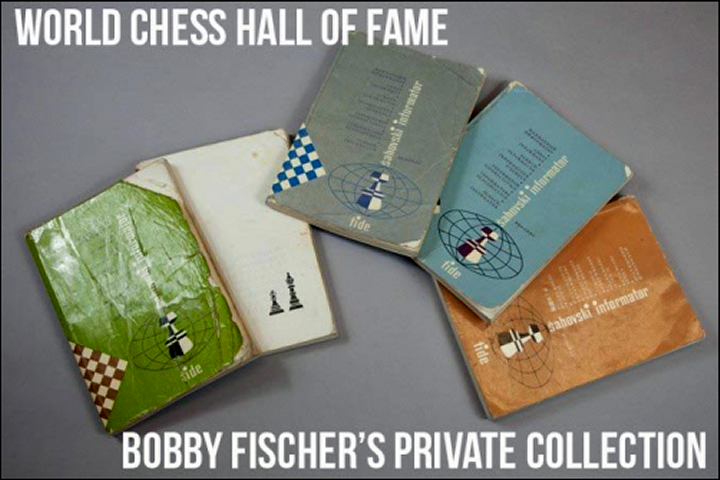
These five copies of the Informant were owned by Fischer and are now kept as a permanent exhibit at the "World Chess Hall of Fame" in Saint Louis, USA.
Kasparov, Karpov, Kramnik and Anand have also been faithful supporters of the Informant. They analysed several hundreds of their games, in books or on CDs, e.g. in the CD series "Play like Champions", for which Kramnik and Anand have also written a foreword.
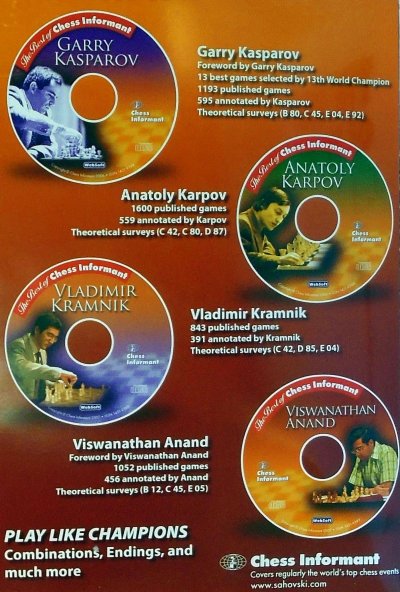
Four CDs with annotated games of and by Kasparov, Karpov, Kramnik and Anand
When the Informant appeared it gathered more quality contributors than ever before in chess history.
Of these four World Champions, Kasparov has established the closest relationship with the Informant. He declared: "We are Children of the Informant."

Garry Kasparov, staunch supporter of the Informant
Kasparov has co-operated with the Informant in one way or other since its very beginning, but from the 113th issue onwards, he has graced its pages with a personal column, "Garry's Choice". As the title suggests, Garry picked topical games that he analyzed and mused over in his inimitable style.
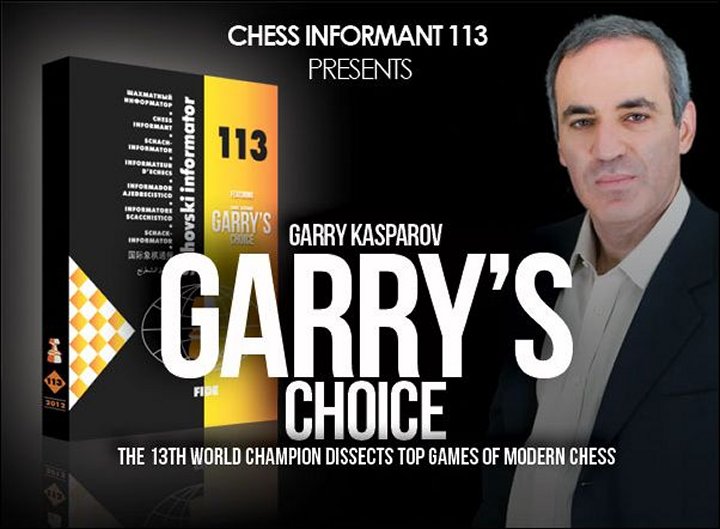
Garry's choice
New generations of world-class players are not less appreciative; along with the rich computerized collections of analyzed chess games, many of today's elite players recognize the usefulness of the Informant.

Alexander Morozevich, Hou Yifan, Hikaru Nakamura and Pentala Harikrishna enjoy the Informant
The latest new contributors include grandmasters from a younger generation such as Richard Rapport, Baadur Jobava, Jan-Krzysztof Duda, Ferenc Berkes and the reigning European Champion, Vladislav Artemiev.
The Informant is not only about "collected annotated games". Throughout its history, its content has been constantly re-invented and refreshed with new sections, including: "Top Five" – five top players give insights into their own chosen games; "Labs- theoretical surveys" - ten selected grandmasters explain their own theory on various topics; "Best Game" and most significant "Novelty" from the previous issue as selected by an appointed jury of important players; correspondence chess, combinations, endings and endgame blunders; "Rising Stars" – large chapters dedicated to new, emerging names like Carlsen, So and Caruana.
When Carlsen was crowned world champion, a special section on him included biographical details, exclusive photos and a selection of his games and novelties. The front page, in his honor, was illustrated with a Viking sailing boat.
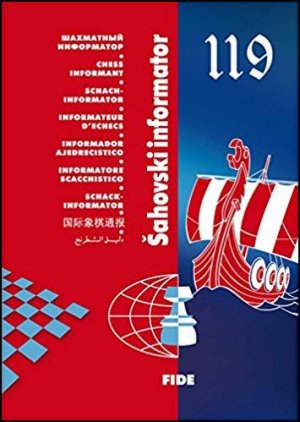
Informant 119
In its heyday, the "Sahovski Informator" was a very prolific publisher that did a lot for chess. Among other things it published The Encyclopedia of Chess Openings (five volumes), The Encyclopedia of Chess Endings (five volumes), The Encyclopedia of Chess Combinations, The Encyclopedia of Chess Problems, The Encyclopedia of Chess Miniatures and Monographs of Chess Openings, all of which saw several reprints.
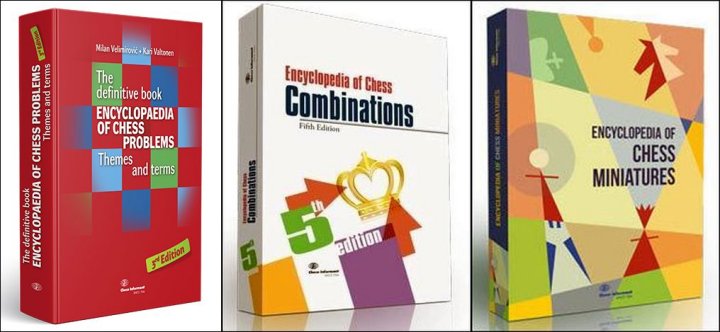
The Chess Informant's website www.sahovski.com offers many of their publications that can be purchased as a hard copy, CD or download. According to the website, the company has sold three million books in 150 countries.
Today many are out of print but can be found on eBay and Amazon by private sellers, new or second-hand. On ebay they are listed as Vintage Collectible Master Chess Game Analysis.
Probably the most desirable item would be "The Best of the Best 1000".
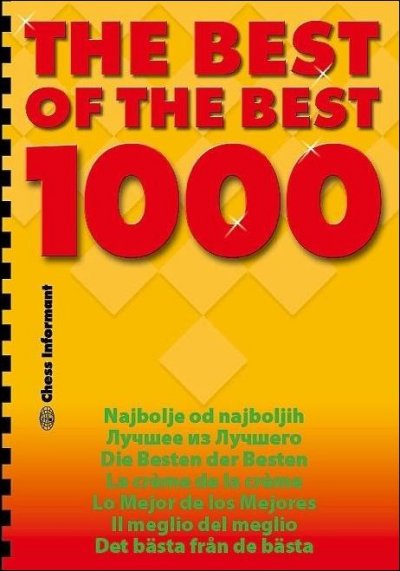
Published in 2008, it offers a collection of "the best of the best" games that appeared in the first 100 volumes of Chess Informant, 1966 – 2007, which contain 101,031 games. One feature of the Informant was to publish the ten best games of the previous volume, which were picked by a jury of grandmasters.
The "Best of the Best 1000" is the complete collection of the ten best games published in the first 100 issues. Among the eighty five members of the jury were the world champions Euwe, Botvinnik, Smyslov, Tal, Petrosian, Karpov, Chiburdanidze and Xie Jun. As the front-page boasts, this is a truly a Best of the Best – Die Besten der Besten – La crème de la crème – Lo Mejor de los Mejores – Il meglio del meglio – Det bästa från de bästa – Лучшее из Лучшего - Najbolje od najboljih!